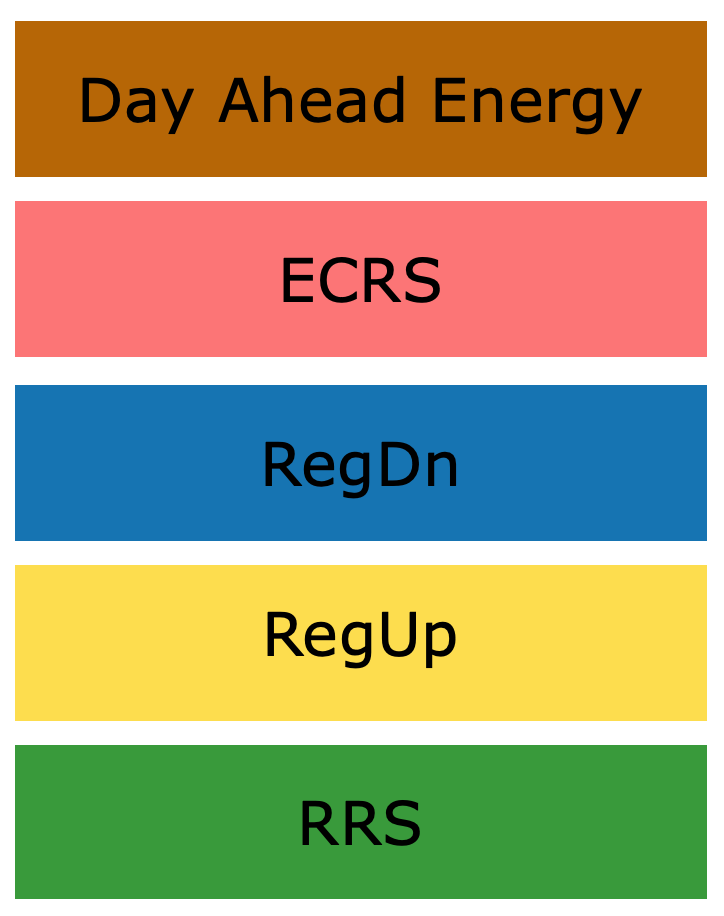Impact of SOC Reserve Rule on Reliability During Extreme Events
Author: Austin Park
Summary
In December 2022, ERCOT made a pivotal shift in State of Charge (SOC) expectations for energy storage systems, particularly impacting short-duration Energy Storage Resources (ESRs).
In response to these developments, and in light of the new ERCOT Contingency Reserve Service (ECRS) Ancillary Service, we examined the relationship between SOC requirements and how well batteries can support the grid during extreme periods. Our focus was on a representative 2 hour battery, and our findings indicated that due to the SOC prerequisites, ERCOT would forfeit key storage reserves during peak demand periods. Far from ensuring reliable reserves, the SOC rules could have actually caused a shortage.
After further discussions regarding the repercussions of the SOC change, ERCOT now intends to reduce the reserve to one hour, rather than the duration of the award. The insights described below substantiate the rationale for this proposed change.
Background
ERCOT’s updated SOC expectations for ESRs providing Ancillary Services necessitated that ESRs maintain a sufficient SOC to fulfill all discharging AS awards for their entire duration, thereby constraining operational flexibility and diminishing the ability to meet AS awards throughout the day. The repercussions of these rule changes were anticipated in the Gridmatic 2022 Storage Report.
Subsequently, in June 2023, ERCOT unveiled ECRS, a new Ancillary Service to address grid reliability and burgeoning energy demand in Texas. ECRS operates in conjunction with pre-existing AS, including Regulation Up, Regulation Down, Responsive Reserve Service, and Non-Spin Reserve Service. ECRS is a 2-hour duration product. Based on ERCOT’s December 2022 SOC expectations, a 100 MW battery would need a state of charge of at least 200 MWh at the beginning of an hour to receive a 100 MW ECRS award.
This analysis focuses on storage behavior during extreme conditions. In particular, we seek to understand how ERCOT’s SOC reserve market rules affect the use of a storage asset during those conditions.
Analysis
The system analyzed is a 100 MW / 200 MWh system within ERCOT. We assessed the outcomes for September 6, 2023, the day the Physical Responsive Capacity (PRC) got to its lowest point, which triggered ERCOT to issue an Energy Emergency Alert 2 (EEA 2). ECRS, a 2-hour AS product, was deployed multiple times for multiple hours on this day.
To gather results, we backtested our battery scheduler with perfect information and two levels of SOC reserve: Ancillary Service product duration and 1-hour duration. We tested with varying levels of initial and final State of Charge (SOC) and found the results were virtually unchanged.
Our Findings
Product duration SOC reserve
Nonspin has a duration of 4 hours, ECRS lasts 2 hours, and all other Ancillary Services last 1 hour). Requiring these levels of reserves, we found the following:

- The battery commits 84 MW instead of the full 100 MW capacity to ECRS for hours 11 through 14.
- In hours 15 and 16, when ECRS was first deployed, the battery avoids ECRS awards entirely. The battery cannot satisfy that deployment while maintaining enough SOC for the evening, so it sits out.
- In hour 19, the absolute peak of the emergency event, the battery sells 38 MW ECRS and 10 MW RegUp. It has insufficient SOC reserve to sell all ECRS.
- The price during hour 19 hits $5000/MWh, so the battery discharges at nearly its maximum rate over the whole hour.
- This leaves it with just 26% SOC at 20:00: enough to provide meaningful reserves, but not enough to satisfy the SOC reserve rule.
- And indeed, the battery chooses not to clear any awards during hour 20. It also discharges only a very small amount of real time energy.
1 hour SOC reserve
If we require just 1 hour of SOC reserve, as ERCOT now intends to do, the results change:

- The battery commits its full 100 MW capacity to ECRS for hours 11 through 14.
- It still avoids the ECRS deployment in hours 15 and 16. It’s not worth the discharge opportunity cost, because the DAM prices came in lower at this point. It would prefer to sell ECRS during hours with little deployment. Recall that this scheduler has perfect foresight. Precise targeting of ECRS deployment is more limited in reality. This is one of the ways in which perfect foresight differs from predictive battery schedules.
- During the peak of the emergency, hour 19, the battery sells 100 MW ECRS and discharges near max. It provides more emergency value to the grid than would be possible if the SOC reserve rule is based on product duration.
- At the start of hour 20, its SOC reserve is 28%. It can discharge at max rate for more than another half hour, if the grid needs it. However, the energy prices fall below $5000/MWh, and the battery sits this hour out entirely.
Conclusion
The product duration SOC reserve rule resulted in the grid forfeiting ECRS support during the peak of the emergency on September 6, 2023. The proposed 1 hour SOC reserve rule allows batteries to supply greater grid support during critical peak demand periods when they are most needed.